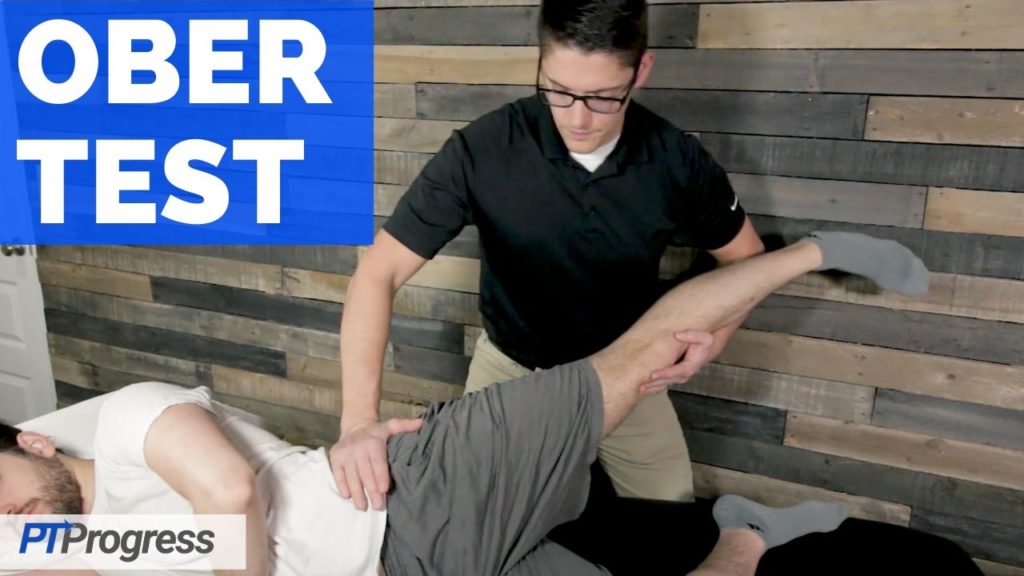
The Ober test is used to identify tightness of the TFL muscle and is often used to further identify causes of tightness or pain in the hip or along the IT band.
How to Perform Ober Test
Position of Patient: The patient should be positioned in side lying with the affected hip up and the hip and knees flexed to 90 degrees initially.
Performance: The examiner places one hand on the pelvis to stabilize and monitor for movement. Perform the test by lifting the patient’s top leg and fully extend the knee and the hip. The examiner should lower the leg while stabilizing the hip.
How to Interpret Ober Test
Positive Finding: The test is considered positive if the patient’s leg does not lower beyond neutral as the examiner lowers it from an abducted and slightly extended position, suggesting shortness of the TFL and IT band. A negative test results in the leg returning normally towards the table.
Test Accuracy / Reliability / Evidence:
κ = .38 (prestandardization)
κ = .80 (poststandardization)
Source: Cibere J, Thorne A, Bellamy N, et al: Reliability of the hip examination in osteoarthritis: effect of standardization. Arthritis Rheum 2008; 59: pp. 373-381

